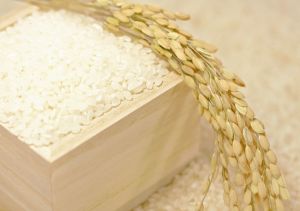2019-11-14 Monthly Feature Story-November 2019-Labor Thanksgiving Day

Cultural Tips-Labor Thanksgiving Day
November 23rd is 'Labor Thanksgiving Day'. It was originally the holiday for a festival called 'Niiname sai' which was carried out at the Imperial Palace to give thanks to deities for the bumper harvest.
'Niiname' means newly harvested rice and a feast. During the 'Niiname sai' Festival, the emperor offers newly harvested rice to all deities of heaven and earth including Amaterasu Omikami (the Sun Goddess).
Then the emperor expresses his gratitude to deities for bringing about this new successful harvest and the emperor himself eats new rice.
According to Japanese mythology, the emperor is a descendant of the Sun Goddess, so the emperor's eating of the new rice gives him more energy and ensures him and his nation an abundant harvest new year.
This tradition has been continuously passed down in the Imperial family.
'Niiname-sai' was given the contemporary name 'Labor Thanksgiving Day' in 1948 after the end of World War II to commemorate the hard work of laborers and to give thanks to one another for the hard work people do, and for the fruits of those labors.
This is because the GHQ (General Headquarters of the Supreme Commander for the Allied Powers) thought that there must be a seperation of Imperial and people's events.
'Kinro-kansha-no-hi' was a direct translation of 'Labor Thanksgiving Day', created by the GHQ back then.

